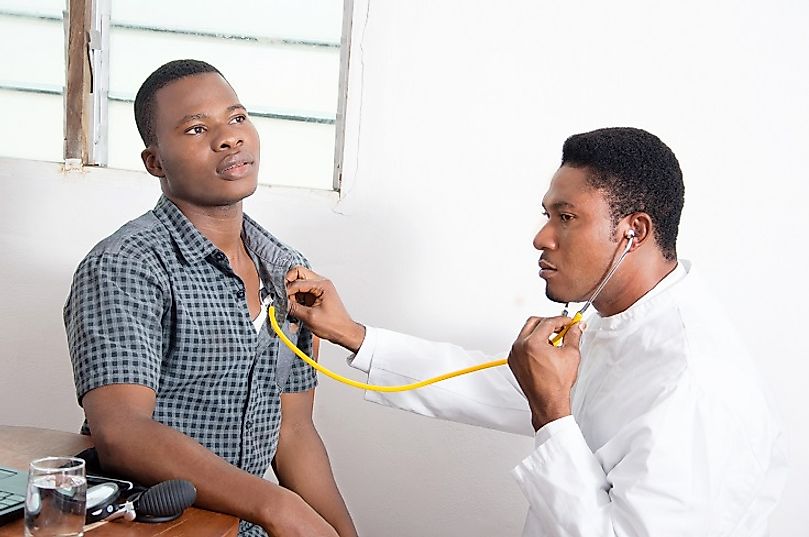Countries With The Lowest Rates Of Diabetes

Diabetes is a metabolic disorder diagnosed when someone has abnormally high levels of blood sugar (hyperglycemia). This is due to insufficient secretion of insulin, or insensitivity to this hormone, as insulin is the hormone that takes up and stores sugar from the blood into muscle . High levels of blood sugar can lead to consequences as severe as organ failure, blindness, paralysis, neuropathy, coma, and even death. Stress, inactivity, nutritionally-poor and energy-dense diets, and being obese are not only correlated with one another, but can also work either independently or interdependently to decrease the human body’s ability to secrete insulin and its sensitivity to its blood sugar-lowering actions. With increasingly sedentary lifestyles and global incidence of obesity, diabetes is a worldwide health problem now more than ever before. As you will see, despite having some of the lowest rates of the disease in the world, many of the countries listed below are still vulnerable to increased rates of the disease in the future. Furthermore, lack of diagnostic tools may mean that their actual rates are far higher still, and a lack of access to medical care and financial resources makes those who suffer from the disease in these countries susceptible to the very worst of diabetes' effects. Sub-Saharan African and former Soviet Socialist Republics dominate this list.
10. Angola (2.6%)
Many nations in Africa are rapidly developing economically and socially and, as a result, medical services are often struggling to keep up. Diabetes in Angola, for example, remains relatively low, but changes in lifestyle will likely lead to an increase in the chronic disease over the next few years. People are more likely to have sedentary jobs and eat more processed food, which is often packaged with large portions, and high in calories, sugar, and trans fats. In Angola, diabetes is most prevalent in people above 60 years of age.
9. Ukraine (2.6%)
Ukrainian rates of diabetes have increased 10% over the last 10 years, although the number remains relatively low. The Ukraine suffers from widespread government corruption that affects even its healthcare industry. It is often virtually impossible for lower-income Ukrainians with diabetes to get treatment or medication, because they cannot afford to buy diabetes medications, or even pay a doctor who can diagnose them at all.
8. Armenia (2.6%)
Armenia is first in its geographic region for mortality from diabetes, and prevalence of the disease is expected to rise to 10% by 2030. Treatment of the disease in Armenia is difficult, because most endocrinologists there reside in a handful of cities that are inaccessible to rural populations. Medication is too expensive for most Armenians. Diabetes is considered a disability in Armenia, so those affected by the disease are often socially ostracized.
7. Albania (2.6%)
Lifestyles in Albania have also become more sedentary, particularly due to the influx of automobiles since the end of the Soviet regime in 1990. Not only is there little information about diabetes available to the Albanian people, but there is little data available to scientists about the prevalence of the disease there over the past several decades.
6. Azerbaijain (2.6%)
90% of diabetes cases in Azerbaijan are Type 2, the form of diabetes that is often developed due to lifestyle choices. Type 2 diabetes is most common in adults over 40, while Type 1 is mostly diagnosed among younger people. In 2013, the Azerbaijani government increased funding for the treatment of chronic diseases, including diabetes, by 2.8-fold.
5. Georgia (2.6%)
In Georgia, a higher number of young people have diabetes than the world average, though the disease is less prevalent among the older population. Georgia’s government is often perceived as being authoritarian, and the political situation continues to be unstable there, even more than two decades after the collapse of the Soviet Union. Because of this, the government has little time or financial resources to devote towards diabetes treatment.
4. Moldova (2.5%)
Moldova struggles with high rates of tuberculosis, and even its relative low rate of diabetes exacerbates this problem, as people who suffer from diabetes are more likely to develop tuberculosis. Like many developing nations, the public does not have much information about diabetes, so the disease often goes undetected for quite a while in most Moldovans. The World Health Organization is trying to step in to help with the problem, since Moldova’s government has not done much to help its suffering diabetic citizens.
3. Gambia (2.0%)
As in other African nations, diabetes in Gambia is especially dangerous because most people do not realize they have it, and therefore it goes untreated. This can lead to many other diseases and side effects, from heart attacks to blindness to the loss of limbs. Gambia is also seeing higher rates of obesity over the last few years, which is expected to escalate diabetes rates in years to come.
2. Mali (1.6%)
As one of the poorest countries in Africa, Mali has a difficult time treating its citizens afflicted with diabetes. There are only four doctors in the country who are fully qualified to treat the disease, and insulin is relatively rare and incredibly expensive, certainly out of the price range of most Mali citizens. There is also a lack of information about the prevention and management of the disease, even as lifestyles become more sedentary. Unfortunately, Mali's government has not expressed much interest in improving diabetes treatment.
1. Benin (1.5%)
Benin struggles with many chronic diseases and preventable causes of death, including malnutrition, low birth weights, HIV, AIDS, and malaria. The country is very poor and has a high rate of illiteracy, making education about any disease, including diabetes, especially difficult. Because of this, diabetes is rarely diagnosed in Benin, which, as in other African nations, can leave Beninese diabetes more vulnerable to serious complications and high rates of death due to diabetes. The World Health Organization is working to improve some of these problems, setting firm targets to reach by 2030.











